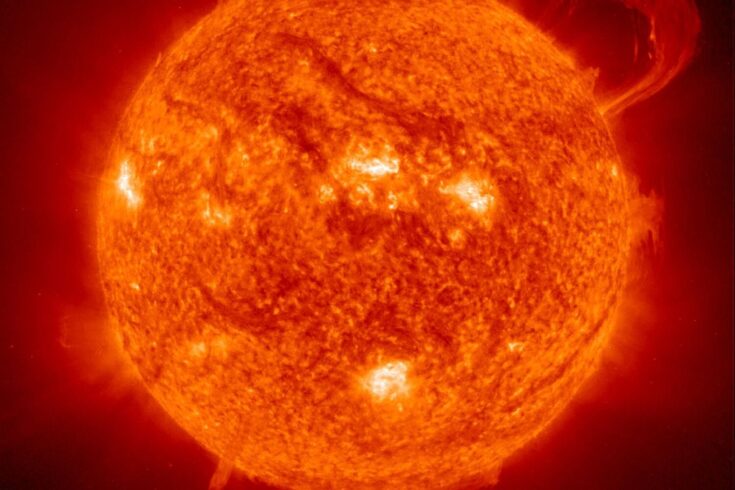The Solar Atmospheric Modelling Suite (SAMS) project aims to build a next-generation modelling tool for the solar atmosphere, making a code that can be run on anything from laptops to the latest supercomputers.
SAMS is funded through the Science and Technology Facilities Council’s (STFC) new Large Award scheme, led by the University of Exeter in collaboration with:
- the University of Warwick
- the University of Sheffield
- the University of Cambridge
Professor Grahame Blair, STFC Executive Director of Programmes, said:
This substantial investment demonstrates our commitment to maintaining the UK’s leading role in solar physics research. Understanding the complex dynamics of our Sun is vital not just for scientific advancement, but for protecting our technology infrastructure, satellite networks, power grids and communications systems on Earth from the impacts of space weather.
Solar activity and Earth impacts
The Sun’s activity has a profound impact on satellites, humans in space and technology on Earth. Solar flares and coronal mass ejections can disrupt power grids, damage satellites, and affect communications, making accurate solar modelling critical for our increasingly technology-dependent society.
Professor Andrew Hillier from the University of Exeter, who leads the project, said:
For a long time the UK was leading the way in simulating the atmosphere of the Sun, but in recent years we have been eclipsed. This project will put us right back as one of the leaders in this area.
Capturing solar complexity
It is vital for any simulation to capture the fundamental interplay between the Sun’s radiation and conditions in the vastly different layers of the Sun’s atmosphere, and the complex coupling between them. This helps us to understand the physical processes behind the Sun’s activity.
No model can currently do this, but one is necessary to understand the cutting-edge observations produced by new facilities, and to provide a step-change in our understanding of how the solar atmosphere works.
Supporting broader solar research
This new project complements STFC’s broader portfolio of solar science research, including:
- support for major international observatories like the Daniel K. Inouye Solar Telescope (DKIST) and the European Solar Telescope (EST)
- space-based missions through UK involvement in the European Space Agency’s Solar Orbiter mission
Open-source approach
For this project, the team will build a modelling suite that will be open-source with world-leading physics capabilities designed to maintain the UK’s solar physics community at the forefront of international research. It will also push forward research in groups around the world.
This will also enable full exploitation of next-generation observations and exascale computing. The SAMS code will be made available as open source, with detailed physics-based documentation to promote ease of use.

